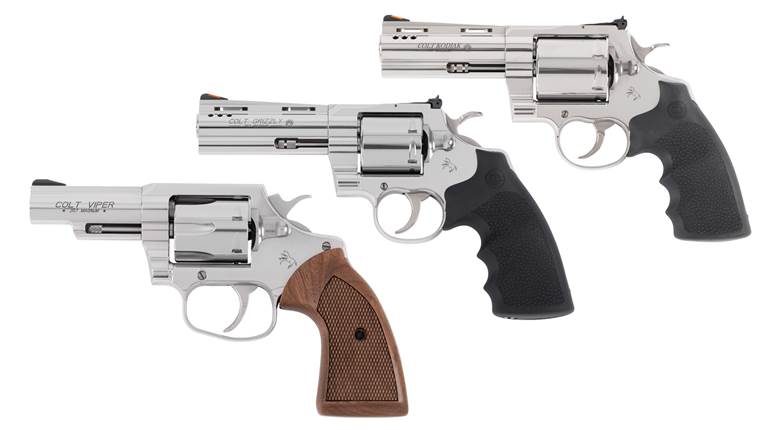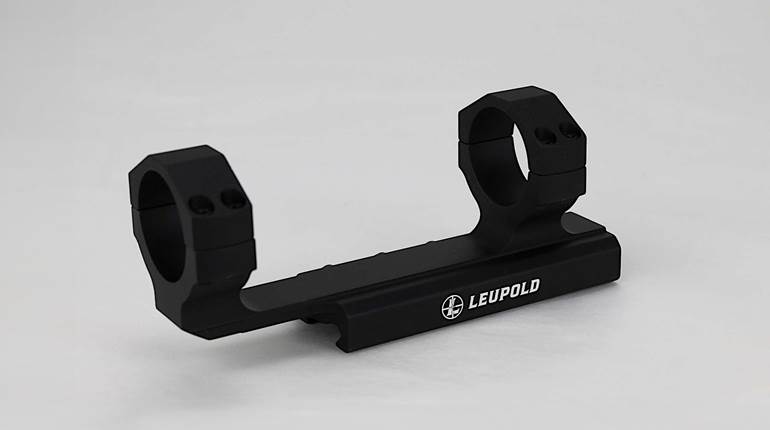
In 1836, Samuel Colt received patents for a pistol with a revolving cylinder. He claimed inspiration came while at sea, after studying how a ship’s capstan could rotate and lock into position. The single-action revolver was the first of its kind and a huge advance in firearm design. With a simple cock of the hammer, a follow-up shot was ready to go.
Later that year, the Connecticut native founded Patent Arms Manufacturing Company of Paterson, N.J., Colt’s Patent. Unfortunately, sales were poor, reports of problems were chronic and the plant stopped all production by 1842.
The financial failure didn’t deter the gun genius, though. He was still refining his design and in 1846, he submitted an improved version to the Army for consideration. Captain Samuel Walker of the Texas Rangers saw a prototype and suggested making it in a larger caliber. When modifications were complete, the Colt Walker was born. It was a fast success, although the lack of an established factory required Colt to contract production to the Whitney Armory—owned and managed by the family of cotton-gin fame—and other sources.
Two years later, he established the Colt’s Patent Fire Arms Manufacturing Company in Hartford, Conn. The innovation wasn’t limited to guns in the plant, either. The factory was among the first to use the principles of interchangeable parts and assembly line production.
Navy Model Colt revolvers followed, then the Army Model and much more. Throughout the 1800s, the foundation was laid for the company’s legendary status.
Samuel Colt died in 1862, but the company he built continued to thrive. It employed roughly 1,500 people and manufactured 150,000 firearms annually until the Civil War ended in 1865.
John Moses Browning worked briefly for the company. While there, he designed the semi-automatic M1900 pistol, which was later refined into the M1911. The performance and reputation was so impressive that, by 1918, the company had already manufactured and sold more than 400,000.
The same handgun served during World War II, when Colt manufactured more than 600,000. To this day, the design remains one of the most popular semi-automatic pistols on the market.
Colt had purchased rights to Eugene Stoner’s AR-15 that became the issued M16 during the Vietnam War, and military orders were huge. But financial strain struck again in 1985, when the company’s union workers went on a five-year strike. Replacement staff didn’t have the same expertise, quality became questionable, and the government decided M16 orders should be filled elsewhere.
Recovery from that financial setback was insurmountable and, in 1992, the company filed Chapter 11 Bankruptcy. But after restructuring, Colt’s products gained new traction. Then, in 1994, it sold to a financial group with principles that didn’t quite match those of mainstream gun owners. When news broke, sales began a steady plummet.
In 2004, USMC Lt. Gen. William M. Keys (Ret.) took management duties at the company and breathed life back into the firm. Nine years later, unfortunately, Colt lost the U.S. government contract for M4 carbines. By 2015, it was back in bankruptcy court
By the following year, another restructuring plan was approved. Spirits were buoyed noticeably in 2017 when the company sales were on the rebound and hiring was on the horizon. “Colt is a proud part of Connecticut history and we are committed to our employees and the company,” said then-Colt CEO Dennis Veilleux in a press release at the time. “We are working hard to transform our business to better serve our customers and carry on Colt’s tradition of quality and excellence. Acquiring our headquarters and facility is a key part of this strategy.”
The company grew, once again, and the reception was a warm one when it reintroduced models, such as the Colt Python, that have long been fan favorites. Despite that success, America’s second-oldest gunmaker was still lacking the kind of capital required to regain the market share it once boasted.
The purchase of Colt by Česká Zbrojovka Group (CZG) last year signals an all new chapter, though. Its merger with one the world’s finest gun makers adds operational, commercial and research capacity in the United States, Canada, Germany and the Czech Republic. Coupled the expertise of other firearm firms in the CZG stable—which include CZ and Dan Wesson—the future is a bright one for Colt, one already glowing with all the new introductions we’ve seen of late.





































